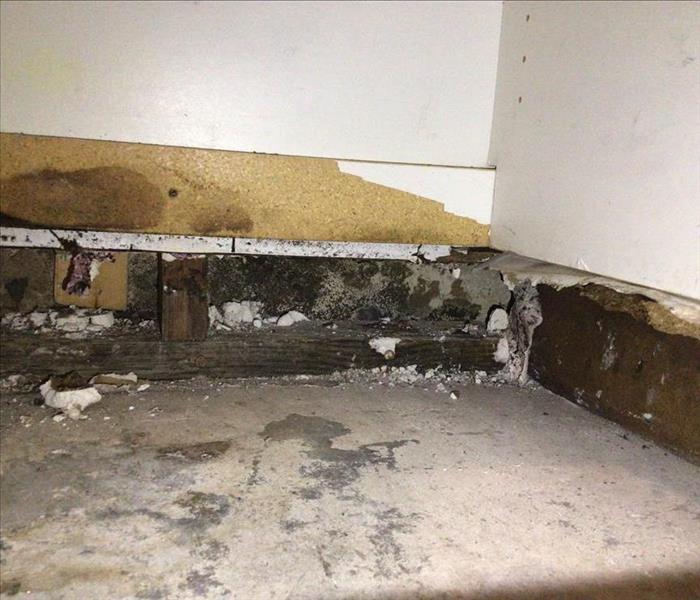A Guide to Removing Mold from Home Insulation
3/12/2024 (Permalink)
 In this blog, we'll provide you with a practical guide on how to effectively remove mold from home insulation without unnecessary fuss.
In this blog, we'll provide you with a practical guide on how to effectively remove mold from home insulation without unnecessary fuss.
Discovering mold in your home insulation can be a cause for concern, but rest assured, addressing the issue is a manageable task. Mold in insulation often occurs in areas with high humidity or water damage, and taking prompt action is crucial. In this blog, we'll provide you with a practical guide on how to effectively remove mold from home insulation without unnecessary fuss.
1. Identify the Affected Area
Begin by identifying the areas of insulation that show signs of mold growth. Look for discoloration, a musty odor, or visible mold patches on the insulation material.
2. Gather Your Supplies
Before diving into the removal process, gather the necessary supplies. You'll need protective gear such as gloves, a mask, and safety glasses. Additionally, have garbage bags, a vacuum cleaner with a HEPA filter, and a stiff brush or sponge ready.
3. Isolate the Area
To prevent the spread of mold spores to other parts of your home, isolate the affected area. Seal off the space with plastic sheeting and tape, creating a containment zone for the removal process.
4. Remove and Discard Moldy Insulation
Carefully remove the mold-affected insulation from the area. Place the insulation directly into garbage bags, sealing them tightly. This ensures that mold spores are contained and don't spread during disposal.
5. Clean the Area
Thoroughly clean the area from which you removed the insulation. Use a stiff brush or sponge along with appropriate cleaning products to scrub the surfaces. This helps remove any remaining mold spores or residues.
6. Vacuum with HEPA Filter
Use a vacuum cleaner equipped with a HEPA filter to carefully vacuum the entire space, including the floor and surrounding surfaces. This helps capture and trap any airborne mold spores, preventing them from spreading.
7. Replace with Mold-Resistant Insulation
After completing the cleaning process, it's time to replace the removed insulation. Consider using mold-resistant insulation materials to minimize the risk of future mold growth. This is particularly important in areas prone to moisture.
8. Address the Source of Moisture
To prevent mold from returning, identify and address the source of moisture. Whether it's a leak, water intrusion, or high humidity, resolving the underlying issue is crucial for long-term mold prevention.
9. Monitor for Recurrence
Keep an eye on the treated area for any signs of mold recurrence. Regular inspections and maintaining a dry environment will help ensure that your efforts in mold removal and prevention are effective.
By following these practical steps, you can successfully remove mold from home insulation and create a healthier indoor environment. Remember, a proactive approach and addressing moisture issues are key to keeping mold at bay.






 24/7 Emergency Service
24/7 Emergency Service